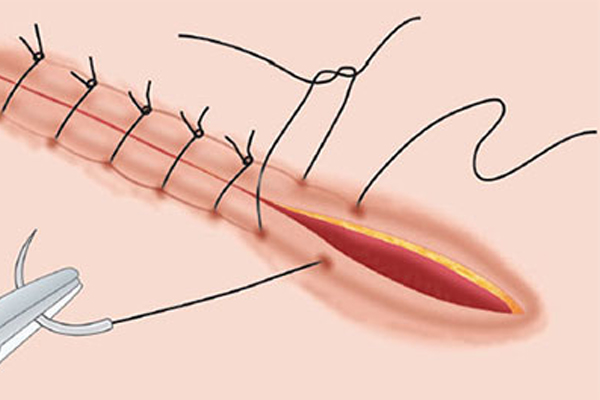Facial Suturing
Facial suturing is a delicate procedure performed to close wounds on the face while minimizing scarring. It requires precision to align skin edges for optimal healing and cosmetic outcomes.
Types of Sutures for Facial Wounds
-
Absorbable Sutures (Used for deep or mucosal layers)
- Vicryl (Polyglactin 910)
- Monocryl (Poliglecaprone)
- Fast-absorbing gut
-
Non-Absorbable Sutures (Used for outer skin, require removal)
- Nylon (Ethilon)
- Polypropylene (Prolene)
- Silk (for fine cosmetic closures)
Suturing Techniques
-
Simple Interrupted Sutures (Most common)
- Used for clean, linear facial wounds
- Provides strong wound closure with minimal tension
-
Continuous Running Sutures
- Used for long, straight wounds
- Faster technique but requires precise handling to prevent track marks
-
Subcuticular Sutures
- Used for cosmetic closure with minimal visible scarring
- Absorbable suture material is placed beneath the skin
-
Vertical & Horizontal Mattress Sutures
- Used for deeper wounds to ensure skin edge eversion
- Helps relieve tension on the wound
-
Corner (Half-Buried) Sutures
- Used for flap or triangular wounds
Guidelines for Facial Suturing
✅ Clean the wound thoroughly with saline or antiseptic
✅ Minimize tension on the skin to reduce scarring
✅ Use fine sutures (e.g., 6-0 or 7-0 for the face)
✅ Align skin edges precisely to avoid step-off deformities
✅ Remove sutures early (3-5 days for eyelids, 5-7 days for other facial areas)
Aftercare & Healing
- Apply antibiotic ointment (to prevent infection)
- Avoid sun exposure (to prevent hyperpigmentation)
- Keep the wound clean and dry
- Use silicone gel or strips (to reduce scarring after healing)



